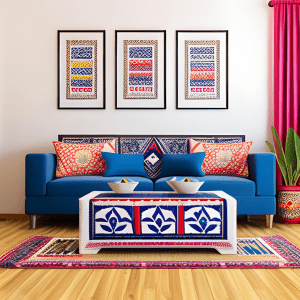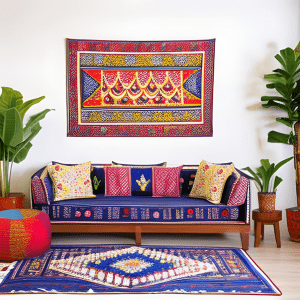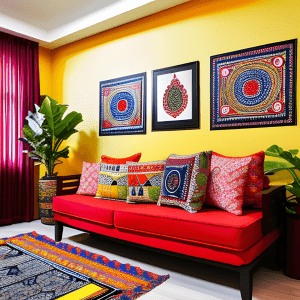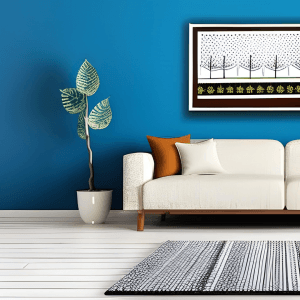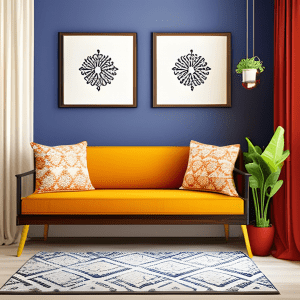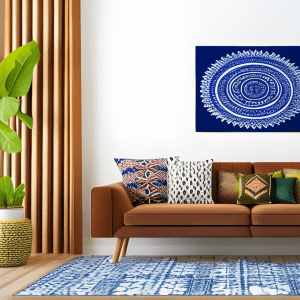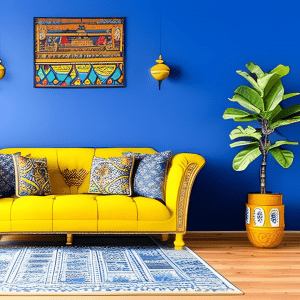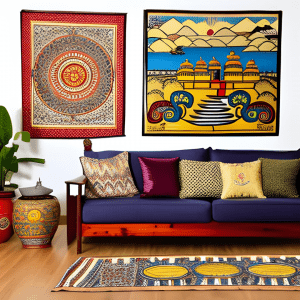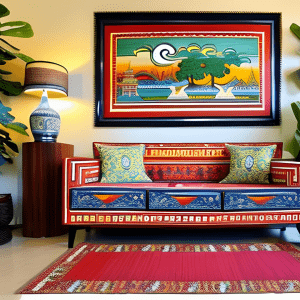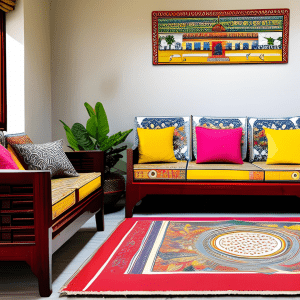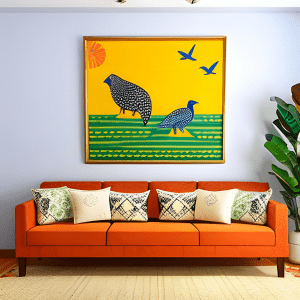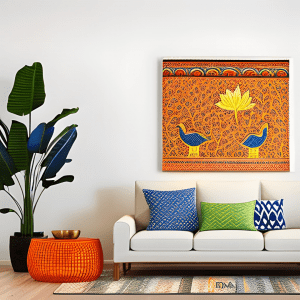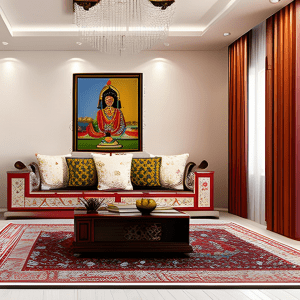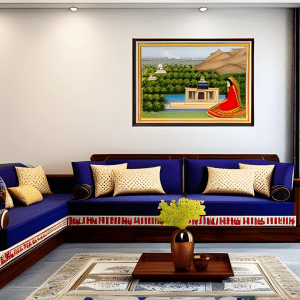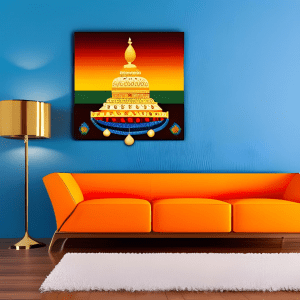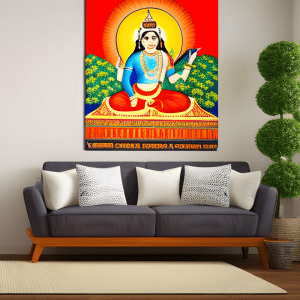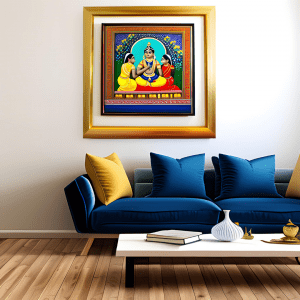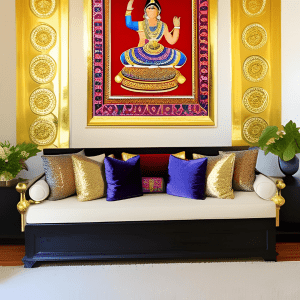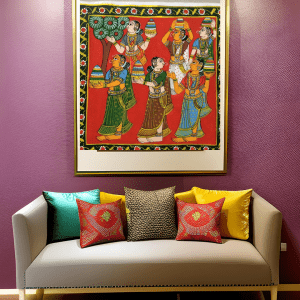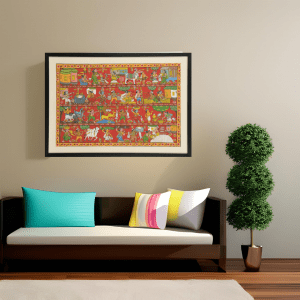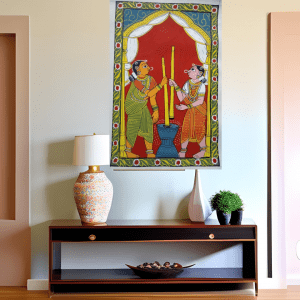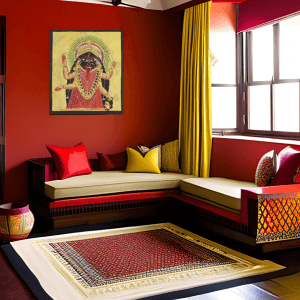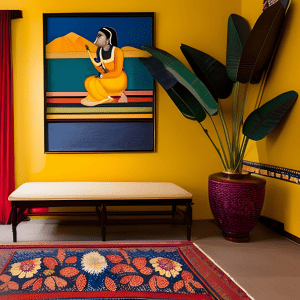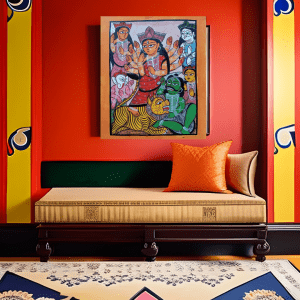Madhubani painting
The Mithila region of Bihar is the origin of the traditional art form known as madhubani painting. It is distinguished by the vivid colour scheme and meticulous craftsmanship. These paintings are frequently utilised in interior design, especially in bedrooms and living rooms where they lend the place a touch of classic elegance. They can be incorporated into furniture pieces as decorative accents or as wall hangings.
Warli painting
An old Maharashtrian art technique called warli painting uses geometric forms and motifs. Typically, mud-covered home floors and walls are used for these artworks. They are utilised in interior design today, especially in dining and living rooms. Warli paintings add a rustic touch to the environment when utilised as wall hangings or as a decorative element in furniture.
Pattachitra
Odisha’s indigenous art form, pattachitra, is characterised by elaborate patterns and mythical motifs. These paintings are created using natural colours on silk or cotton fabric. They are frequently utilised in interior design as furniture decorations or as wall hangings, especially in living rooms and bedrooms.
Gond painting
A tribal art form from Madhya Pradesh called gond painting is distinguished by complex details and vivid hues. These paintings, which feature nature and its elements, are thought to energise the area in which they are displayed. They are frequently utilised in interior design as furniture decorations or as wall hangings, especially in living rooms and bedrooms.
Rajasthani miniature painting
Rajasthani miniature painting is a traditional art form that uses brilliant colours and precise details. These paintings typically use natural colours on silk or paper and reflect legendary subjects. They are frequently used in interior design as furniture decorations or as wall hangings, especially in living rooms and bedrooms, to give the space a traditional elegance
Mysore painting
Originally from the city of Mysore in the Indian state of Karnataka, Mysore painting is a traditional South Indian painting technique. These paintings are frequently created using natural dyes and pigments and are renowned for their fine detailing and vibrant colours. Mysore paintings, which are frequently employed in interior design to give a space a cultural and spiritual sense, frequently feature Hindu gods and goddesses. These can be used in furniture design or framed and placed as wall art.
Tanjore painting
Tanjore painting is a traditional South Indian painting style that was developed in Thanjavur, a town in the Tamil Nadu state. The use of valuable stones and gold foil, as well as the vivid colours and meticulous details, make these paintings stand out. Tanjore paintings are regarded as a type of devotional art and frequently include Hindu gods and goddesses. These can be framed and placed as wall art and are frequently utilised in interior design to give a room a traditional and spiritual feel.
Cherial scroll painting
The traditional Telangana art form of cherial scroll painting is cherial scroll painting. These paintings, which are created on cloth scrolls, are renowned for their vivid colours and fine details. Cherial paintings are utilised in interior design to give a space a cultural character by often depicting mythological stories. They can be used in furniture design, such as on cushions or table runners, or framed and displayed as wall art.
Kalighat painting
Folk art known as “Kalighat painting” has its roots in Kolkata, West Bengal’s Kalighat neighbourhood. These paintings are renowned for their humorous subjects, stark colour schemes, and sharp outline. Paintings from the Kalighat style frequently feature social criticism, such as political satire or comments on society conventions. These can be framed and hung as wall art or used into furniture design, such as on cushions or table runners, to give a room a whimsical and playful feel.
All images credit to AI

